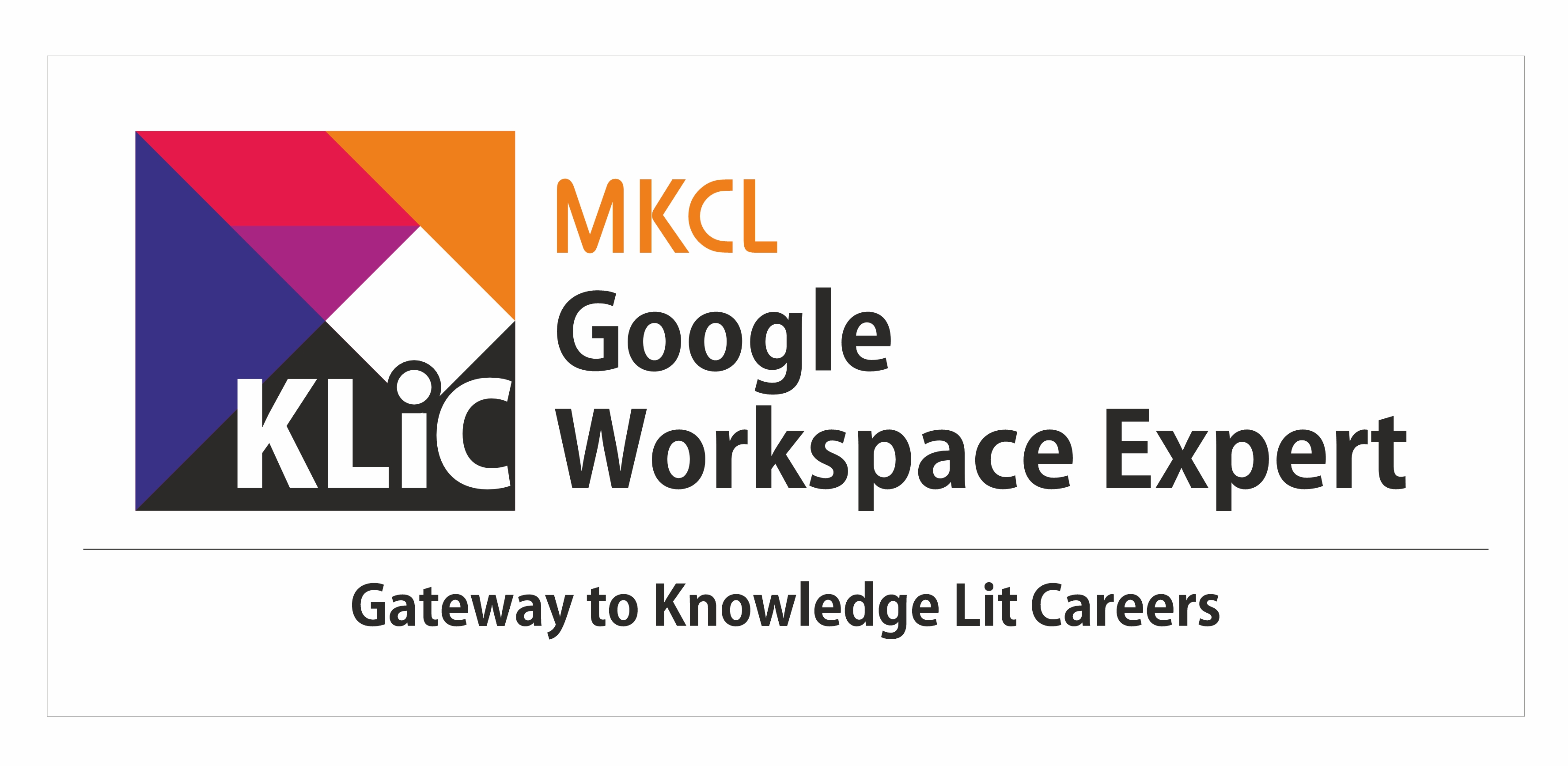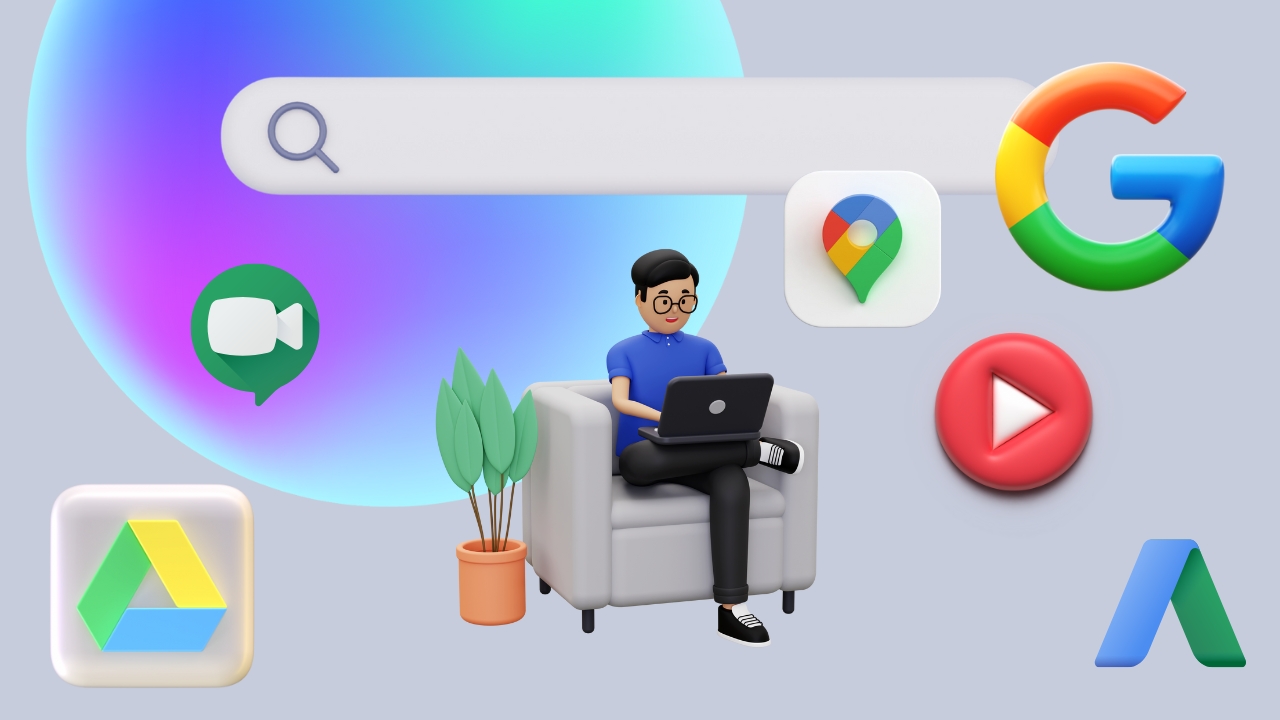- Understand the Fundamentals and Applications of AI: Gain a deep understanding of AI technology, focusing on Google Bard and LaMDA, to comprehend how AI enhances everyday products and services.
- Explore Google's Suite of Products and Services: Acquire knowledge about Google's diverse tools and technologies, including Google Sky Map, Google Chromecast, Google Classroom, Google Earth, Chromebook, Google Messages, Google Apps Script, Lumin PDF, Wrike, and DocuSign, and their applications in various contexts.
- Develop Practical Skills: Learn to effectively use Google's tools, such as navigating Google Earth, casting with Chromecast, managing classes in Google Classroom, scripting with Google Apps Script, and signing documents with DocuSign.
- Application in Educational Contexts: Understand how Google's technologies can be leveraged in educational settings, enhancing teaching, learning, and administrative tasks.
- Security and Productivity Optimization: Gain insights into maximizing productivity using Chromebook and securing digital communication and documentation through Google Messages and DocuSign.

Leveraging Google Workspace for Business and Productivity
Use Google tools to manage business tasks, meetings, and documents. Optimize workflow and team coordination for higher output.
Introduction
What you'll learn ?
- AI Proficiency: Differentiate between AI technologies like ChatGPT and Google Bard, explaining the benefits of AI in products and services and identifying potential AI applications using Google Bard.
- Comprehensive Tool Knowledge: Demonstrate a thorough understanding of the features, functions, and educational applications of Google Sky Map, Google Chromecast, Google Classroom, Google Earth, and other Google technologies.
- Practical Application Skills: Exhibit the ability to effectively use Google technologies in various scenarios, including but not limited to, navigating Google Earth, utilizing Google Classroom for educational purposes, casting presentations through Chromecast, and scripting with Google Apps Script.
- Educational Enhancement: Apply Google technologies to enhance educational experiences, utilizing tools like Google Classroom and Google Sky Map for teaching and learning purposes.
- Optimization and Security: Implement strategies for maximizing productivity with Chromebook and maintaining security with Google Messages and DocuSign, ensuring efficient and secure digital communication and documentation processes.
Syllabus
- Introduction
- Benefits of AI in our everyday products
- ChatGPT vs Google Bard
- What is Google Bard?
- When was Google Bard announced?
- What is LaMDA?
- Features of Google Bard AI
- Scope of AI with Google Bard
- How Google Bard works?
- Who can use Google Bard?
- Limitations of Google Bard
- Objectives
- Introduction to Google Sky Map
-
- Accessing Google Sky Map
- Overview of the Sky Map mobile app
- Getting started and setting location
-
- Visible layers in the Sky Map
-
- Navigating the Google Sky Map
-
- Searching for objects
-
- Calibrating your phone's compass
-
- Using the Sky Map Gallery
-
- Using the Time Travel feature
- Educational uses of Google Sky Map
- Troubleshooting the possible issues in Google Sky Map
- FAQs on Google Sky Map
- What is Chromecast?
- How does Chromecast work?
- Casting presentation using Chromecast
- Advanced settings and features of Chromecast
- Introduction to Google Classroom
- Introduction to its page layout and basic tools
- Exploring Sample Class and other menu options
- Archived Classes and defining settings
- Introduction and exploration of Sample Class on Google Classroom
- Class Settings on Google Classroom
- Features of a sample Google Classroom
- Tools for teachers on Google Classroom
- Classwork, People, and Marks tabs on Google Classroom
- Introduction to Google Classroom Mobile App
- Menu and Other Options on Google Classroom App
- Introduction to Google Earth
- Tools and functions in Google Earth
- Checking location on Google Earth
- Location options in basic display on Google Earth
- Side Panel options and Search function on Google Earth
- Using the Voyager tool on Google Earth
- Using I'm feeling lucky and Projects on Google Earth
- Using Create for Projects on Google Earth
- Map Style option on Google Earth
- Measuring distance and area on Google Earth
- Using Compass and 2D-3D toggle on Google Earth
- Street View and Location options on Google Earth
- Downloading and accessing Google Earth on desktop
- Introduction to Google Earth mobile app
- Menu and Tools options on Google Earth mobile app
- Introduction to Chromebook
- Getting started with Chromebook
- Chromebook apps and extensions
-
- Recommended Chromebook apps and extensions
- Maximize productivity on Chromebook
-
- Keyboard shortcuts and printing
- Chromebook security features
- Keeping Chromebook secure
-
- Chromebook maintenance tips and troubleshooting
- Introduction to Google Messages
- Setting up the Google Messages app
- Exploring the texting feature on Google Messages app
- Using the texting feature on Google Messages app
- Other features of Google Messages
- Device Pairing and Google Messages on Desktop
- Further features of Google Messages on Desktop
- Introduction to Google Apps Script
-
- Integration with Google Drive
- Quick start to Google Apps Script
-
- Introduction to Apps Script dashboard
-
- More about the Apps Scripts dashboard
- Writing your first Google Apps Script
- Google Apps Script example in Google Docs
- Types of Scripts
- Introduction to Codelabs
- FAQs on Google Apps Script
- Introduction to Lumin PDF Tool
- Getting started with Lumin PDF
-
- Navigating the Lumin PDF Interface
-
- Uploading your first document
-
- Basic PDF editing and annotation
-
- Advanced PDF editing features
- Managing and organizing PDF files
- Collaborating with Lumin PDF
- FAQs on Lumin PDF
- Introduction to Wrike
- Getting Started with Wrike
- Project creation in Wrike
- Integrating Wrike with Google Workspace
- Introduction to DocuSign
-
- What is DocuSign?
-
- Why do we need to use DocuSign?
-
- Key features and benefits
- Getting Started with DocuSign
-
- Add DocuSign to Google Workspace
-
- Creating an account
-
- DocuSign for Gmail
-
- Features of Docusign for Gmail
-
- DocuSign for Google Docs
-
- DocuSign for Google Drive
- Change the signature, locate files
Certificate
- MKCL provides certificate (for 30/60/90 hours courses) to the KLiC learner after his/her successful course completion.
Academic Approach
The Academic Approach of the course focuses on the “work centric” education i.e. begin with work (and not from a book !), derive knowledge from work and apply that knowledge to make the work more wholesome, useful and delightful. The ultimate objective is to empower the Learner to engage in socially useful and productive work. It aims at leading the learner to his/her rewarding career as well as development of the society.
Learning methodology
- Learners are given an overview of the course and its connection to life and work.
- Learners are then exposed to the specific tool(s) used in the course through the various real-life applications of the tool(s).
- Learners are then acquainted with the careers and the hierarchy of roles they can perform at workplaces after attaining increasing levels of mastery over the tool(s).
- Learners are then acquainted with the architecture of the tool or Tool Map so as to appreciate various parts of the tool, their functions and their inter-relations.
- Learners are then exposed to simple application development methodology by using the tool at the beginner’s level
- Learners then perform the differential skills related to the use of the tool to improve the given ready-made outputs.
- Learners are then engaged in appreciation of real-life case studies developed by the experts.
- Learners are then encouraged to proceed from appreciation to imitation of the experts.
- After imitation experience, they are required to improve the expert’s outputs so that they proceed from mere imitation to emulation.
- Finally, they develop the integral skills involving optimal methods and best practices to produce useful outputs right from scratch, publish them in their ePortfolio and thereby proceed from emulation to self-expression.
Evaluation Pattern
Evaluation Pattern of KLiC Courses consists of 4 Sections as per below table:
| Section No. | Section Name | Total Marks | Minimum Passing Marks |
|---|---|---|---|
| 1 | Learning Progression | 25 | 10 |
| 2 | Internal Assessment | 25 | 10 |
| 3 | Final Online Examination | 50 | 20 |
| Total | 100 | 40 | |
| 4 | SUPWs (Socially Useful and Productive Work in form of Assignments) | 5 Assignments | 2 Assignments to be Completed & Uploaded |
MKCL’s KLiC Certificate will be provided to the learner who will satisfy the below criteria:
- Learners who have successfully completed above mentioned 3 Sections i.e. Section 1, Section 2 and Section 3
- Additionally, learner should have completed Section 4 (i.e. Section 4 will comprise of SUPWs i.e. Socially Useful and Productive Work in form of Assignments)
- Learner has to complete and upload minimum 2 out of 5 Assignments
Courses Fee Structure from 01 July, 2025 Onwards
KLiC 30 hour course fee applicable from 01 July, 2025 all over Maharashtra| KLiC Course Duration | MFO: MKCL Share (Including 18% GST) |
ALC Share (Service Charges to be collected by ALC) |
|---|---|---|
| 30 hours | Rs. 300/- | Rs. 1,500/- |
Important Points:
* Above mentioned fee is applicable for all Modes of KLiC Courses offered at Authorised Learning Center (ALC) and at Satellite Center
* Total fee is including of Course fees, Examination fees and Certification fees
* MKCL reserves the right to modify the Fee anytime without any prior notice
* Above mentioned fee is applicable for all Modes of KLiC Courses offered at Authorised Learning Center (ALC) and at Satellite Center
* Total fee is including of Course fees, Examination fees and Certification fees
* MKCL reserves the right to modify the Fee anytime without any prior notice
